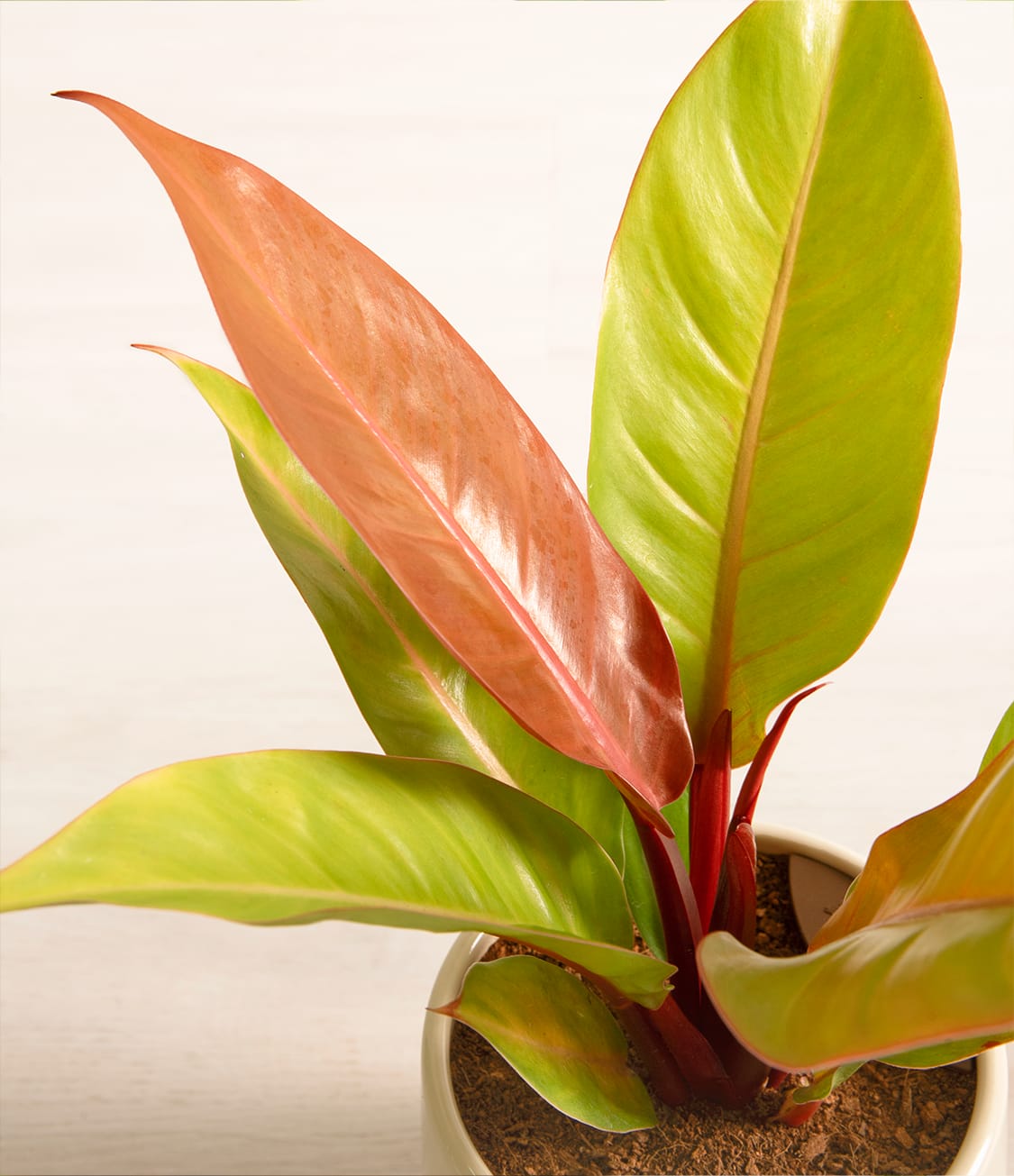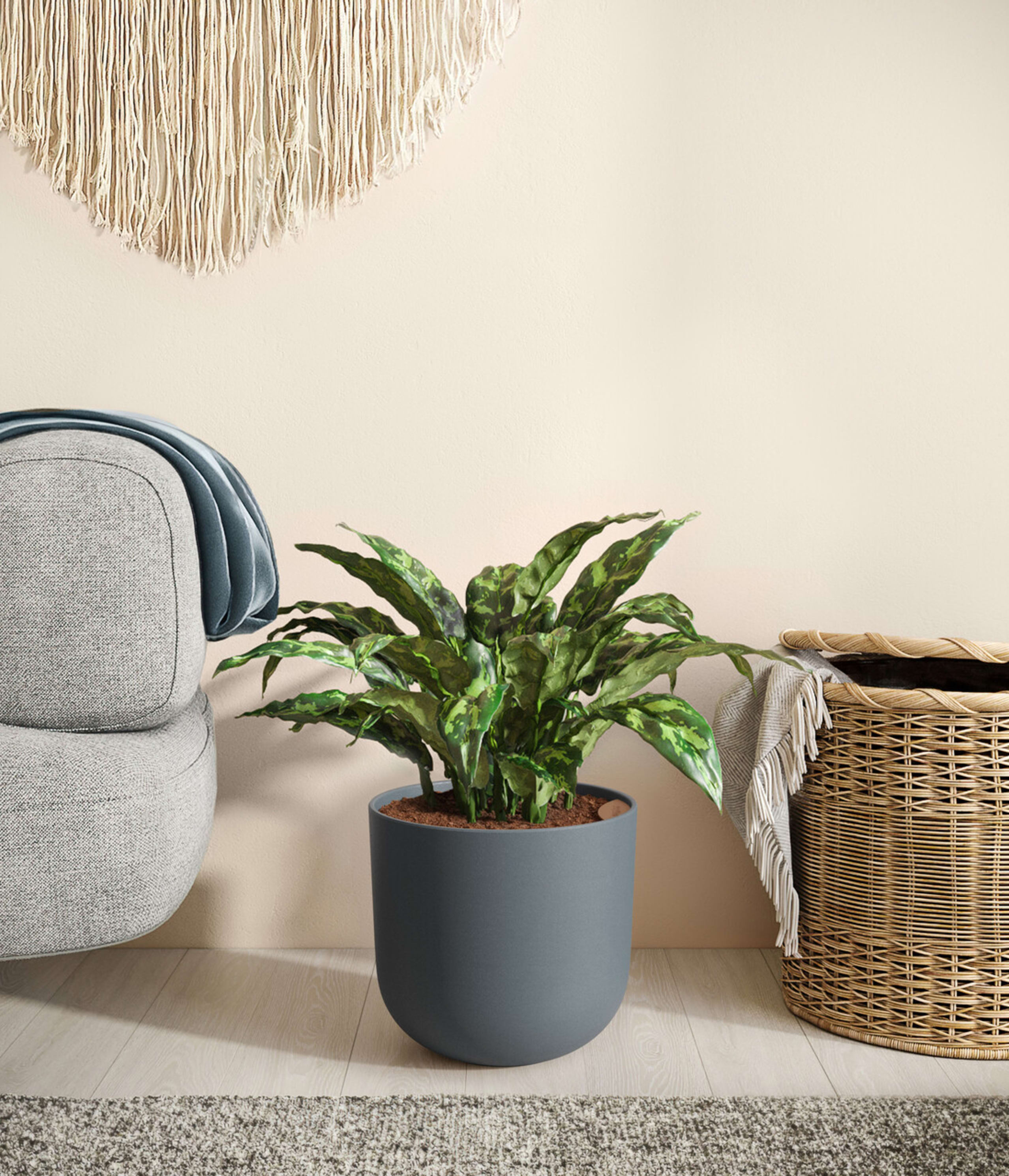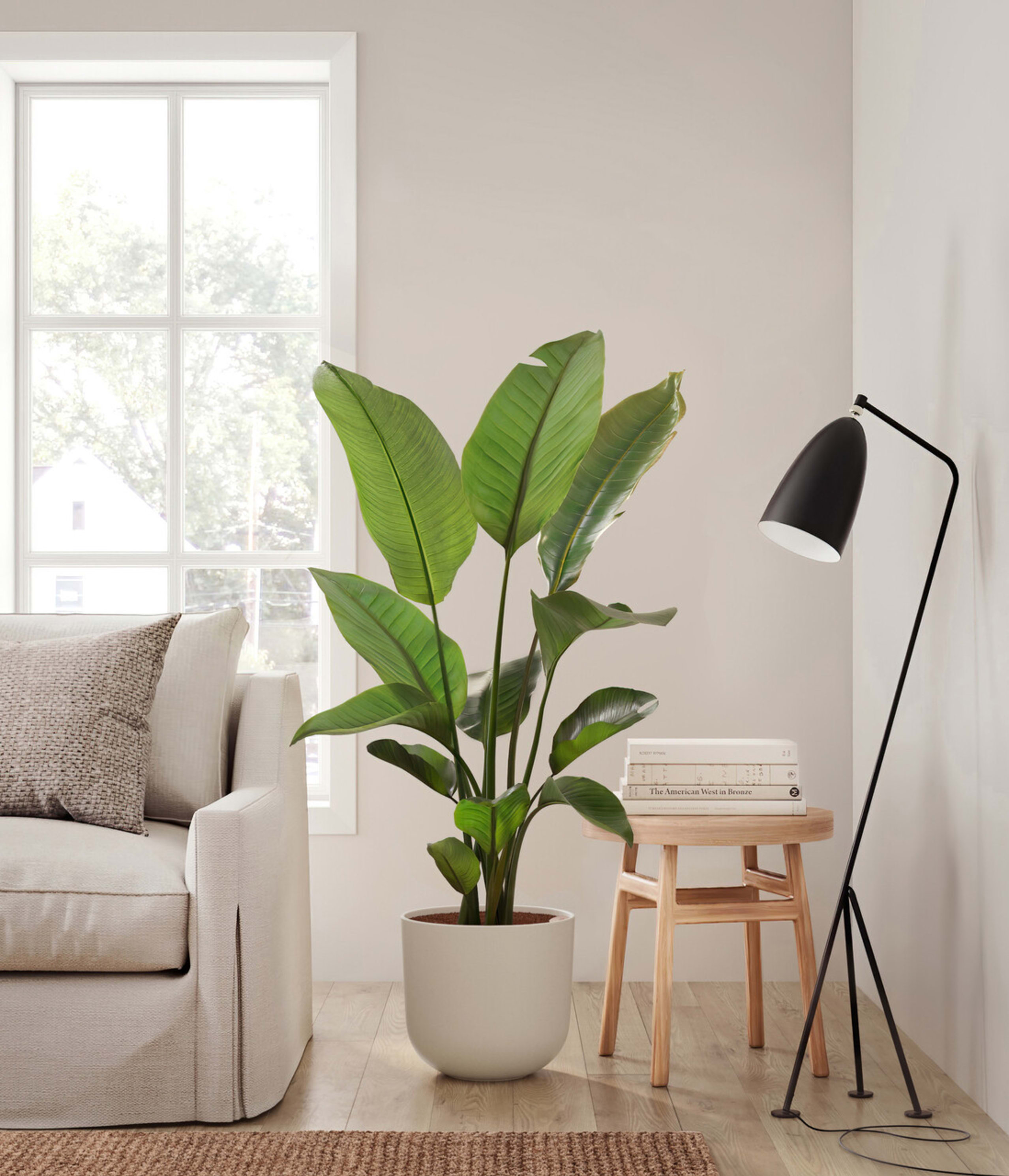Plant care library / Philodendron Prince Of Orange
How to Care for Philodendron Prince Of Orange
About Philodendron Prince Of Orange
Philodendron Prince of Orange is easy to care for and easier to love - naturally getting its name from the Greek words Philo - 'love' and dendron - 'tree.' Hailing from Central America and the Caribbean, Philodendron Prince of Orange is a unique hybrid - thanks to which it changes colors over time. Its foliage first sprouts up in bright yellow, later develops deep tones of amber and bronze, and ultimately grows into lush, dark green.
Other common names
- Philodendron erubescens (scientific name)
- Orange Prince
How Often Should I Water My Philodendron Prince Of Orange?
With easyplant, watering your Philodendron Prince of Orange is simple. Make sure to check the easyplant reservoir once a month and fill it when empty, and you're all set!
Without an easyplant self-watering pot, the Prince of orange requires one watering per week. Allow the soil to dry between waterings to prevent overwatering. Observe the top 1-2 inches of soil; if it's dry, your plant is ready to be watered. Water thoroughly until water flows out of the bottom of the pot. Investing in an easyplant pot will ensure your Philodendron Prince of Orange is never under or over-watered. Because a more frequent watering schedule is required with these plants, there is more of a chance of under or overwatering. This can lead to root rot and cause the foliage to look wilted and weak. With easyplant, you'll avoid these potentially critical mistakes.
Philodendron Prince of Orange Light Requirements
Philodendron Prince of Orange grows best in a space with bright direct light, where the sunlight streams inside directly, and can also adapt to spaces with bright indirect light, where the sun rays are diffused. Avoid placing it in spaces with low light or spaces without natural sunlight.
For optimum growth and health of your Prince of Orange, placing it in a spot that receives plenty of ambient or filtered light throughout the day is important. The ideal location for this plant would be a south or west-facing window, as these windows typically provide bright light from outside. Make sure that the sunlight does not hit directly on the Prince of Orange; indirect or diffused lighting will ensure its beauty and life span!
Philodendron Prince Of Orange Plant Care
During your Philodendron Prince of Orange's first few days at home, one or two leaves might wilt or fall. This is a normal part of the adjustment, which can take up to a couple of weeks, and is no cause for concern.
Once adjusted, Philodendron Prince of Orange is very easy to care for and will reward your love for it by quickly bouncing back from any mishap. To help it grow optimally and evenly, occasionally dust the leaves and rotate the pot by a ¼ turn once a month.
How Big Do Philodendron Prince of Orange Plants Grow?
The Philodendron Prince of Orange grows in many colors, with new leaves developing from the center in yellow, orange, copper, and green. It grows rapidly and matures to a size of two feet tall with a spread of three feet when kept indoors.
If planted in suitably tropical climates outdoors, this plant can reach an impressive height of up to 3 feet! New plants typically grow between 18-20 inches within their first year.
Ensure your Philodendron Prince of Orange stays at its optimum health and vibrancy by giving it adequate filtered light. Not only will this keep the foliage looking vibrant and healthy, but it also promotes faster growth! However, be careful not to give too little light as this can cause dull-colored leaves that look weak and fragile.
Temperature & Humidity
The Philodendron “Prince of Orange” plant naturally thrives in tropical climates, and to ensure that your plants get the best care, keeping them at temperatures between 65 – 80°F (18 – 27°C) is essential. Luckily, this temperature range coincides with most home room temperatures making it easy for you to maintain optimal growth conditions for Prince of Orange houseplants.
As a tropical species, the Prince of Orange Philodendron thrives in humid conditions with a humidity level of around 50%. Keeping the humidity levels in your home at this level will help keep your Philodendron healthy and happy. For drier climates, an investment in a humidifier may be necessary to ensure your plant's health.
Are Philodendron Prince Of Orange Toxic for Pets & Kids?
Philodendron Prince of Orange may be moderately toxic if ingested, so be sure to keep away from curious children and pets. Philodendrons release a highly poisonous substance called calcium oxalate that can be hazardous to humans if ingested.
It is safe to touch the leaves; however, it's always a good idea to wear gloves while tending your plant and remember to wash your hands afterward. Moreover, ensure children cannot access the Philodendron as even minimal consumption could lead to serious health issues; in case of ingestion, you must immediately call for medical help.
If you consume any part of a Philodendron plant, your body will immediately feel the effects. You may experience irritation of the mouth and excess drooling or foaming as it spreads through your digestive system, causing uneasiness. In rare cases, philodendron poisoning can even lead to kidney stones!
Pets, such as cats and dogs, must be kept away from philodendrons as they are highly toxic. If ingested by your pet, symptoms may manifest within a few hours; these include vomiting, excessive drooling, pawing of the mouth area, oral irritation, difficulty breathing, or foaming at the mouth. Loss of appetite is another warning sign that should not go unnoticed - if you notice any of these signs in your pet, seek veterinary help immediately.
Troubleshooting Common Problems with Philodendron Prince Of Orange
If you notice multiple leaves become scorched or brown, relocate the pot to a less brightly lit area where the light is not directly touching the foliage. If you witness a combination of yellow and brown on the same foliage, it's likely an indication of overwatering. However, if only the leaves are entirely yellow but some other foliage has utterly dried out with dark spots - that could be due to underwatering.
If you notice crispy edges on the leaves, likely, you are not watering as frequently as necessary. Additionally, if the foliage appears pale and dull in color, then this can indicate a lack of adequate sunlight for your plant - so be sure to move it somewhere brighter!
Frequently Asked Questions about Philodendron Prince Of Orange Plant
- Is the Philodendron Prince of Orange rare?The Philodendron Prince of Orange is a rarity among its other Philodendron relatives, as it has never been grown in the wild. This contemporary hybrid was invented in 1989, yet still retains the core properties of its wild philodendron species, originating from Central and South America's tropical rainforests and the Caribbean.
- How much light does a Philodendron Prince of Orange need?The Prince of Orange flourishes in a bright but not directly sunny spot. Ideally, it will be exposed to plenty of ambient or filtered light throughout the day; too much sun can damage this plant's delicate leaves and limit its growth potential.
- How do I make my Prince of Orange more orange?To achieve more vibrant orange foliage on your plant, offer it indirect light for optimal growth and deeper orange hues. Additionally, avoid any potential overwatering, as the Prince of Orange's foliage will begin to yellow.
- What soil is best for a Prince of Orange Philodendron?Philodendron Prince of Orange needs an aerated, well-draining potting medium to reach its full potential. The perfect soil for this plant is a soilless mixture like peat moss combined with perlite or vermiculite – both excellent choices that will deliver the drainage needed while also providing moisture retention.

 Small Plants
Small Plants Medium Plants
Medium Plants Plants Collections
Plants Collections Large Plants
Large Plants Huge Plants
Huge Plants